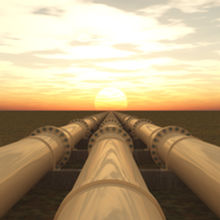What are the challenges facing Blue Ammonia production?
- Admin
- Jun 25, 2023
- 3 min read
Blue ammonia refers to ammonia produced from natural gas using carbon capture and storage (CCS) technology. Ammonia is a compound made up of nitrogen and hydrogen, and it has several applications, including as a fertilizer, chemical feedstock, and potential energy carrier.
The term “blue” in blue ammonia indicates that the production process includes carbon capture, which helps reduce greenhouse gas emissions. During the production of blue ammonia, natural gas is first converted into hydrogen and carbon dioxide (CO2) through a process called steam methane reforming. The CO2 generated in this process is then captured and stored, preventing it from being released into the atmosphere.
The process of producing ammonia from methane in blue ammonia typically involves the following steps:
1. Methane Reforming: Methane, the primary component of natural gas, is first subjected to steam methane reforming (SMR) or autothermal reforming (ATR). In SMR, methane reacts with steam at high temperatures (700-1000°C) in the presence of a catalyst to produce hydrogen (H2) and carbon monoxide (CO). ATR combines partial oxidation and SMR to produce the desired synthesis gas (syngas) containing hydrogen, carbon monoxide, and unreacted methane.
2. Water-Gas Shift Reaction: The syngas produced in the previous step undergoes a water-gas shift (WGS) reaction, where water vapor reacts with carbon monoxide to produce additional hydrogen and carbon dioxide. This reaction helps increase the hydrogen-to-carbon monoxide ratio required for subsequent steps.
3. CO2 Capture: In blue ammonia production, the carbon dioxide (CO2) generated during the reforming processes (SMR or ATR) is captured using carbon capture and storage (CCS) technologies. The captured CO2 is separated and treated to ensure its purity before further processing.
4. Ammonia Synthesis: The captured and purified CO2 is then combined with hydrogen from the reforming steps to produce ammonia (NH3) through the Haber-Bosch process. This process involves subjecting the hydrogen and nitrogen (from air) to high temperature (~450°C) and pressure (~150-200 atmospheres) in the presence of an iron-based catalyst. The nitrogen and hydrogen react to form ammonia.
5. Purification and Storage: The produced ammonia is purified to remove any impurities, such as water and other gases. The purified ammonia can then be stored or further processed for various applications, such as fertilizer production or as a potential energy carrier.
Throughout this process, carbon capture technologies are employed to capture and store the CO2 emissions, making it a "blue" ammonia production process that helps reduce greenhouse gas emissions.
It's important to note that the specific process and technologies used can vary depending on factors such as the scale of production, available resources, and technological advancements in carbon capture and ammonia synthesis.
The challenge for blue ammonia lies in the carbon capture aspect of blue ammonia production. Carbon capture technologies aim to capture CO2 emissions from industrial processes and store them underground, preventing their release into the atmosphere. However, the implementation of CCS on a large scale faces several challenges. These include:
Cost: CCS technologies can be expensive to implement and operate, which can impact the economic viability of blue ammonia production. The capture, transportation, and storage of CO2 require significant investments.
Infrastructure: Establishing the necessary infrastructure for carbon capture, transportation, and storage is a complex task. It requires pipelines or other means of transporting captured CO2 to suitable storage sites, which may be geologically suitable formations or depleted oil and gas fields.
Storage capacity and leakage risks: Identifying and ensuring sufficient storage capacity for captured CO2 is crucial. Additionally, the long-term integrity of storage sites must be ensured to prevent leakage of stored CO2 back into the atmosphere.
Energy requirements: Implementing carbon capture technologies can lead to an increase in energy consumption during the production of blue ammonia. This can potentially impact the overall energy efficiency and carbon footprint of the process.
Efforts are underway to address these challenges and improve the viability of blue ammonia production with carbon capture. Research and innovation in CCS technologies, cost reduction, and policy support are all crucial factors in advancing the development and deployment of blue ammonia as a low-carbon energy carrier.
Recent Posts
See AllA deed poll in the context of commercial projects is typically used to unilaterally declare an intention, obligation, or a condition....
In Australia, the development approval and environmental approval processes typically occur during different stages of the project...














Comments